 W
WFrancisco de Aguirre was a Spanish conquistador who participated in the conquest of Peru, Bolivia, Chile and Argentina.
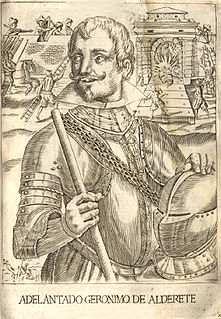 W
WJerónimo de Alderete y Mercado was a Spanish conquistador who was later named governor of Chile, but died before he could assume his post.
 W
WAlejo was a Chilean mestizo, who fought in the Arauco War. He was the son of the Mapuche cacique Curivilú and the Spanish Isabel de Vivar y Castro who was captured during a Mapuche raid. Isabel and Alejo were rescued five years later and rejoined the Spanish society. Alejo enlisted the Spanish army, but the system of castas prevented his promotion. As a result, he deserted from the Spanish army and joined the Mapuches, being appointed toqui. Instructed in Spanish military strategy, he posed a serious threat to his former masters, but he died in a crime of passion: after he had sex with a captured Spanish woman his two wives murdered him.
 W
WManuel de Amat y Junyent, OSJ, OM was a Spanish military officer and colonial administrator. He was the Royal Governor of the Captaincy General of Chile from December 28, 1755 to September 9, 1761, and Viceroy of Peru from October 12, 1761 to July 17, 1776.
 W
WAnganamón, also known as Ancanamon or Ancanamun, was a prominent war leader of the Mapuche during the late sixteenth and early seventeenth centuries and a Toqui from. Anganamón was known for his tactical innovation of mounting his infantry to keep up with his cavalry.
 W
WCaupolicán was a toqui or war leader of the Mapuche people, who led the resistance of his people against the Spanish Conquistadors who invaded the territory of today's Chile during the sixteenth century. His rule as Toqui lasted roughly from 1553-1558 AD.
 W
WColocolo was a Mapuche leader in the early period of the Arauco War. He was a major figure in Alonso de Ercilla y Zúñiga's epic poem La Araucana, about the early Arauco War. In the poem he was the one that proposed the contest between the rival candidates for Toqui that resulted in the choice of Caupolicán. As a historical figure there are some few contemporary details about him. Stories of his life were written long after his lifetime and display many points of dubious historical accuracy.
 W
WAntonio de Erauso, born Catalina de Erauso, who went by Alonso Díaz and some other masculine names and is also known in Spanish as La Monja Alférez, was a one-time nun who subsequently travelled around the Basque Country, Spain and Spanish America, mostly under male identities, in the first half of the 17th century. Erauso's story has remained alive through historical studies, biographical stories, novels, movies and comics.
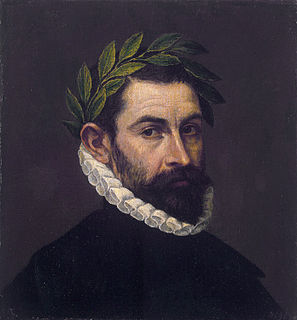 W
WAlonso de Ercilla y Zúñiga was a Spanish nobleman, soldier and epic poet, born in Madrid. While in Chile (1556–63) he fought against the Araucanians (Mapuche), and there he began the epic poem La Araucana, considered one of the greatest Spanish historical poems. This heroic work in 37 cantos is divided into three parts, published in 1569, 1578, and 1589. It tells of the courageous insurrection of the Araucanians and also relates the history of Chile and of contemporary Spain.
 W
WGalvarino was a famous Mapuche warrior during the majority of the early part of the Arauco War. He fought and was taken prisoner along with one hundred and fifty other Mapuche, in the Battle of Lagunillas against governor García Hurtado de Mendoza. As punishment for insurrection, some of these prisoners were condemned to amputation of their right hand and nose, while others such as Galvarino had both hands cut off. Galvarino and the rest were then released as a lesson and warning for the rest of the Mapuche. Mendoza sent him to inform general Caupolicán of the number and quality of the people which had entered their land again, to put some fear into him, among other means that were tried, so that he might submit without coming to blows.
 W
WGarcía Hurtado de Mendoza y Manrique, 5th Marquis of Cañete was a Spanish Governor of Chile, and later Viceroy of Peru. He is often known simply as "Marquis of Cañete". Belonging to an influential family of Spanish noblemen Hurtado de Mendoza successfully fought in the Arauco War during his stay as Governor of Chile. The city of Mendoza is named after him. In his later position as Viceroy of Peru he sponsored Álvaro de Mendaña's transpacific expedition of 1595, who named the Marquesas Islands after him.
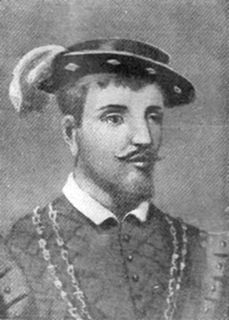 W
WJuan Jufré de Loayza y Montesa (1516–1578) was a Spanish conquistador who participated in the 1541 expedition of Pedro de Valdivia to Chile. He was the first alcalde of Santiago, Chile and held the position of governor of the Argentine province of Cuyo. He founded the city of San Juan de la Frontera and re-founded the city of Mendoza.
 W
WLevtaru was a young Mapuche toqui known for leading the indigenous resistance against Spanish conquest in Chile and developing the tactics that would continue to be employed by the Mapuche during the long-running Arauco War. Lautaro was captured by Spanish forces in his early youth, and he spent his teenage years as a personal servant of chief conquistador Pedro de Valdivia, but escaped in 1551. Back among his people he was declared toqui and led Mapuche warriors into a series of victories against the Spanish, culminating in the Battle of Tucapel in December 1553, where Pedro de Valdivia was killed. The outbreak of a typhus plague, a drought and a famine prevented the Mapuche from taking further actions to expel the Spanish in 1554 and 1555. Between 1556 and 1557, a small group of Mapuche commanded by Lautaro attempted to reach Santiago to liberate the whole of Central Chile from Spanish rule. Lautaro's attempts ended in 1557 when he was killed in an ambush by the Spanish.
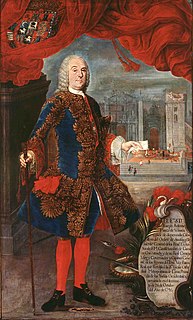 W
WJosé Antonio Manso de Velasco y Sánchez de Samaniego, KOS was a Spanish soldier and politician who served as governor of Chile and viceroy of Peru.
Tomás López Marín y González de Poveda, 1st Marquis of Cañada Hermosa was a Spanish colonial administrator who served as Royal Governor of Chile.
 W
WPedro de Oña (1570–1643) is considered the first known poet born in Chile, and is best remembered for his verse epic poem Primera parte de Arauco domado. Born in Angol, he was the son of a military captain, Gregorio de Oña, who had perished during the conquest of Chile by Spain. Pedro de Oña grew up amid this ongoing conflict; he was born in what was then a small military post, in a territory largely controlled by Chile's indigenous peoples.
Don Martín García Óñez de Loyola was a Spanish Basque soldier and Royal Governor of the Captaincy General of Chile. According to Diego Barros Arana it is likely that Ignatius of Loyola was his uncle.
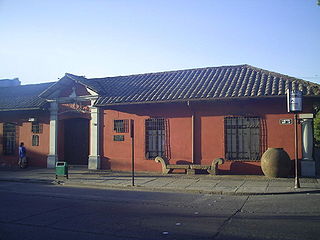 W
WJuan Albano Pereira Márquez was a Portuguese merchant and the godfather and tutor of Bernardo O'Higgins. He is the ancestor of one of the most important Chilean colonial families.
 W
WJuan Pérez de Zurita was a Spanish Conquistador, the son of Alonso Díaz de Zurita, native of Cañete de las Torres and Inés Fernández de Córdova. In 1536 he began his military career. In 1548 he was in Granada and in 1550 he embarked to the Indies with his brother Alonso de Zurita. In 1553 went on to the kingdom of Peru. At the beginning of 1557, by order of the Viceroy Hurtado de Mendoza he was sent with an expedition of 700 soldiers under the command of his son García Hurtado de Mendoza, to Chile. From there by order of the new Governor Mendoza, he was sent with a command of 70 men with the position of Lieutenant Governor and Greater Justice for the province of Tucuman, Juries and Diaguitas. He crossed the Andes Mountains and arrived at Santiago del Estero in May 1558.
 W
WPedro Gutiérrez de Valdivia or Valdiva was a Spanish conquistador and the first royal governor of Chile. After serving with the Spanish army in Italy and Flanders, he was sent to South America in 1534, where he served as lieutenant under Francisco Pizarro in Peru, acting as his second in command.
 W
WFrancisco de Villagra Velázquez was a Spanish conquistador, and three times governor of Chile.
 W
WPedro de Viscarra de la Barrera, twice Royal Governor of Chile, was an old lawyer who had arrived in the Captaincy General of Chile from Spain in 1590. Alonso de Sotomayor went to Peru on July 30, 1592 to petition the viceroy there for more men leaving Pedro de Viscarra with the title of lieutenant governor of Chile. Upon the arrival of Martín García Óñez de Loyola on 23 September 1592 to replace Sotomayor, Viscarra relinquished his office.